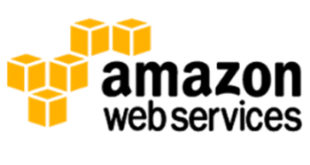Andres Richter, CEO of Priority Software discusses why some CIOs still on the fence when it comes to cloud adoption.
In recent years, enterprise management software has had no choice but to evolve in response to a changing technology landscape born from reduced budgets, cloud computing, mobility, big data analytics and social engagement.
Factors such as the consumerisation of IT together with changes in human behaviour require instant information at our fingertips, wherever we are, from any device.
Unsurprisingly, this has led to vendors looking at ways to disrupt the market, and the rise of cloud enterprise resource planning (ERP). Gartner has suggested it will be 10 years or more before the majority of organisations decide to move ERP to the cloud. In practice, 20 per cent of our customers at Priority are already in the cloud – and even the analyst firm notes this will happen much sooner in industries such as professional services, business services and digital media.
The cloud is regularly touted as the silver bullet for greater efficiency and flexibility. It reduces costs, inspires innovation and delivers value to business from transforming internal practices.
As business leaders, we’re becoming accustomed to expecting the same app convenience we enjoy in our personal lives as in the workplace. Cloud adoption is inevitable and many CIOs have already placed non-essential business applications in the cloud.
But when it comes to cloud-based ERP, it is the CIOs who are really committed to future proofing their tech who have made the decision to move the business backbone – such as ?nance, supply chain management and HR data – into the cloud. So what is stopping other CIOs from making the change, and how can they overcome internal barriers?
Firstly, there is a suspicion among some business leaders around the security of sensitive data in the cloud. As part of developing a strategy for transferring data to cloud, it’s important to find a vendor who has transparency on the quality of data processing within cloud-based ERP, particularly in relation to industry recognised compliance standards.
Indeed, many vendors have invested heavily in enterprise level security which may exceed what an on-premises solution could provide.
Secondly, there are often conflicting messages from the top of organisations who despite using cloud for some functions aren’t willing to look at upgrading their ERP system due to past experiences of lengthy IT deployment. Additionally, organisational adjustments are almost always a part of the transition to the cloud and the organisation needs to be ready and willing to make the changes.
In order to address these barriers, businesses should undertake a proper evaluation of their goals and the current processes in place. The business needs to drive the project and the IT team has a role to play in highlighting the benefits. It’s of paramount importance to connect business objectives to your ERP strategy to ensure value is realised.
Transitioning the operational side of the business to a cloud environment can be done efficiently. Once installed, businesses can benefit from core application scalability and reduced hardware costs. This is particularly useful for companies who are looking for affordable alternatives to the up-front expense of upgrading servers. The scalability afforded by “pay as you go” business management is another way of ensuring time and money isn’t spent on the IT team managing hardware, software, and upgrades.
The good news for CIOs and their teams considering moving some or all ERP functions online is that at least some ERP vendors are prepared for this move. The impact of flexible cloud-based solutions combined with the growing appeal of SaaS and outsourcing processes means there is an alternative for business users who remain dissatisfied with their incumbent system. In addition to the well documented benefits of cloud such as ease of deployment, immediacy and accessibility, cloud ERP greatly improves the agility of business operations.
Partner relationships become easier to get up-and-running, integrating systems in response to business growth becomes a more efficient process and real-time collaboration is enabled across the enterprise. As with any IT move, measuring post implementation results will allow for complete clarity on the real value cloud can bring to core business processes.
In a mobile age, there is an ever-increasing need for business to engage more effectively with employers, customers and suppliers. This should continue to propel companies beyond the era of on-site ERP and to the cloud as they look for ways to stand out from competitors. For companies who are tired of dealing with an ageing, legacy system, perhaps it’s time to ‘bite the (silver) bullet’ – or risk getting left behind.
Andres Richter is the CEO of Priority Software.
www.priority-software.com
Throughout January, PCR is running a dedicated Sector Spotlight on The Cloud – click the logo below for more articles
 PCR Tech and IT retail, distribution and vendor news
PCR Tech and IT retail, distribution and vendor news



